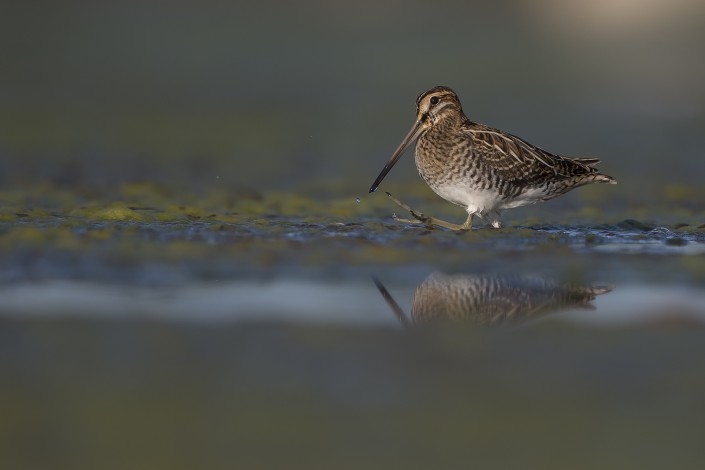This post is also available in: Swedish
Common snipe – Gallinago gallinago
Common snipe – Gallinago gallinago
is a small, stocky wader native to the Old World. The breeding habitat is marshes, bogs, tundra and wet meadows throughout northern Europe and northern Asia. It is migratory, with European birds wintering in southern and western Europe and Africa (south to the Equator), and Asian migrants moving to tropical southern Asia. The North American Wilson’s snipe was previously considered the same species, and is listed as such in older field guides.
It is a well camouflaged bird, it is usually shy and conceals itself close to ground vegetation and flushes only when approached closely. When flushed, they utter a sharp note that sounds like scape, scape and fly off in a series of aerial zig-zags to confuse predators. They forage in soft mud, probing or picking up food by sight. They mainly eat insects and earthworms, also some plant material.
The male performs “winnowing” display during courtship, flying high in circles and then taking shallow dives to produce a “drumming” sound by vibrating its tail feathers. This sound has been compared by others to the bleating of a sheep or goat; hence in many languages the snipe is known by names signifying “flying goat,” “heaven’s ram,” as in Scotland by “heather-bleater” and in Finnish the name taivaanvuohi, “sky goat”. Common snipe nest in a well-hidden location on the ground, laying four eggs of a dark olive colour, blotched and spotted with rich brown, which are incubated by the female for 18–21 days. The freshly hatched young are covered in dark maroon down, variegated with black, white and buff. The young are cared for by both parents, each parent looking after half the brood, with fledging in 10–20 days.
This is the sound of the displayflight
Recording by Krzysztof Deoniziak from Xeno canto





































